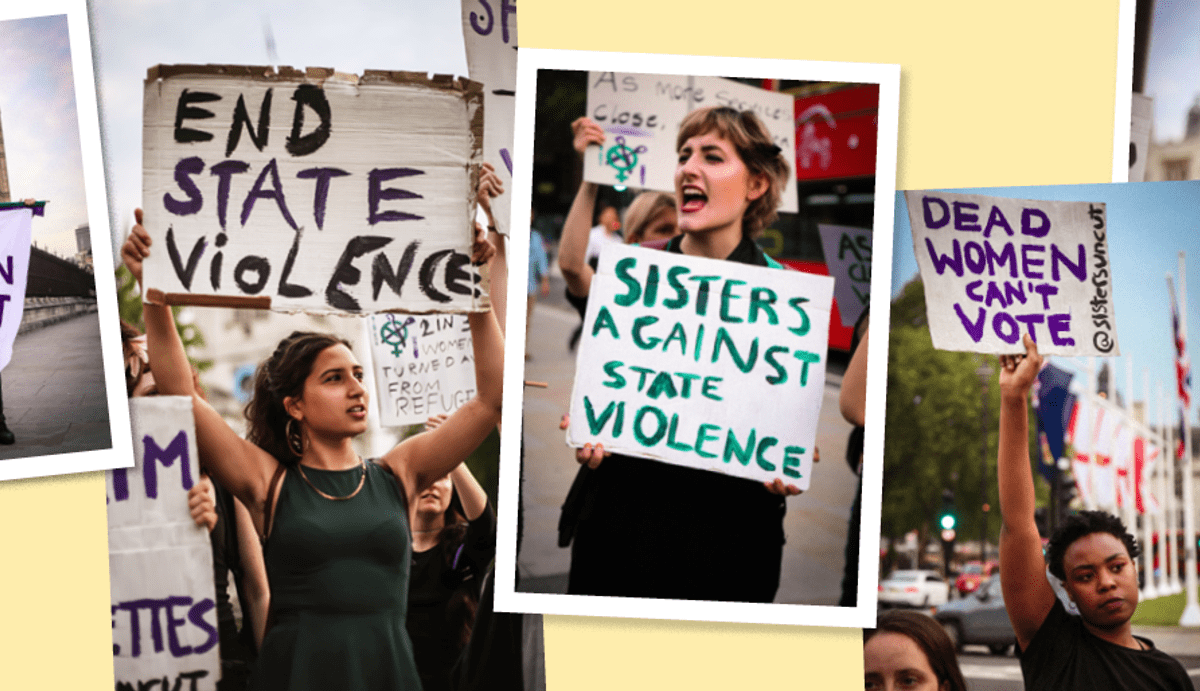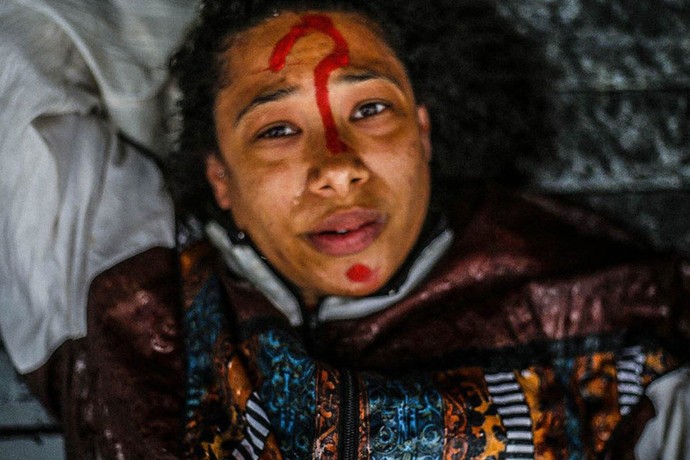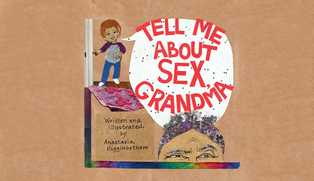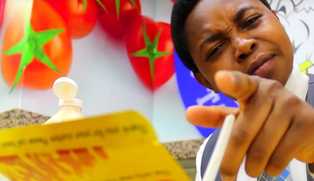This interview is taken from our recently released 6th print issue: The Spectacle, available to buy from our website here.
Women’s bodies have long been understood as battlegrounds, but women also use their bodies to make battlegrounds of the streets, from the steps of Parliament to the gates of Yarl’s Wood detention centre. Skin Deep’s A’Ishah Waheed posed three questions to three London-based women-led organisations, who share their thoughts on protest as a tactic to force change, and how the notion of spectacle can be weaponised in the fight against institutional oppression in its various forms.
East End Women’s Museum aims to record, represent and amplify women’s rich social, political and cultural histories from London’s East End. The museum creates space for women who experience different forms of discrimination to tell their stories, and increase the visibility of women from traditionally marginalised or excluded groups.
East End Sister’s Uncut are a feminist group taking direct action for domestic and sexual violence services across East London. They are part of the larger Sisters Uncut network.
Movement for Justice by Any Means Necessary is an independent civil rights organisation that seeks to raise awareness and confront institutional racism. They are one of leading organisations in the movement to shut down UK detention centres and stop deportations.
What does spectacle mean to you?
East End Women’s Museum: A spectacle is something out of the ordinary – striking, with a strong visual element. Something unusual that erupts into the public space, disrupting the existing flow of everyday life.
East End Sister’s Uncut: Spectacle has helped catapult us to fame. When we stormed the red carpet of the film Suffragette, we were using the publicity around the film to get our message out through the media. These high-profile actions are important for us to build our name and, more importantly, a movement. After that action, our London group grew to the point where we had to split off into three: North, South and East. All over the country people were getting in touch with us about our local services, wanting to start their own groups.
Movement for Justice: It’s about a visible presence, political organising, and political consciousness. Our work must be connected to the oppressed – to people who are fighting, working out how to win those fights, and building a movement. It’s got to communicate that there is something they can join and be part of, and that their struggle is shared in some way. Physical gatherings like protests are a way for people to feel more empowered; you are not on your own. A voice that is speaking with many becomes stronger and has the potential to grow. That’s certainly true for actions like the Shut Down Yarl’s Wood protests, where people inside look out and see signs in lots of different languages conveying messages of support. When they see faces they know, see faces they don’t know, sometimes standing in the rain – just the sight of that, people showing up and making the demonstration happen, saying and showing that you are not on your own – it exposes and breaks the lie that the system has taught you: that you are nothing.
 How has spectacle been used in protests led by women?
EEWM: During the time of the suffragettes, photography – a relatively new technology – was a powerful means to spread messages further. It was also accessible for communities with low levels of literacy. Our knowledge of the suffragettes is usually limited to the mainstream, middle-class, educated and often white members of the movement; the Women’s Social and Political Union (WSPU), for example, are well known for their use of violent tactics (against property) in protest, which turned the idea of the ‘respectable woman’ on its head. Yet there were many more factions within the suffragette movement, such as the East London Federation of the Suffragettes (ELFS), which operated in an ethnically diverse community. In East London, there were people from the West Indies, Asia and Russia, as well as huge Jewish and Irish communities. It was very likely the ELFS reflected this racial and ethnic diversity within its ranks, but there are limited records to say for certain. Unfortunately, as these are working class communities, people did not have the privilege of writing memoirs or having their stories recorded, so it’s difficult to find information on specific individuals. However, there are some indications, such as an ELFS newsletter that advertised an Indian play with English subtitles. Unlike the rest of the suffragette movement, they were international in their focus, placing themselves in a global context and spreading information on worldwide suffragette movements. When the First World War broke out, they were very active in challenging racism and xenophobia. Whilst ELFS chose to challenge conscription, nationalism and borders, the WSPU went the opposite way, becoming more nationalist and colonial in its outlook. They even went so far as to change the name of their newspaper from ‘Votes for Women’ to ‘Britannia’.
ELFS used very different tactics in their protest to their ‘mainstream’ middle-class counterparts. For them, the idea of the ‘respectable woman’ was a label they had never been afforded in the first place – they were already thought of as being unfeminine, rough and savage. For them, a prison sentence would have much more costlier consequences. So they adopted an approach of direct, collective and community-led action. They created spectacles within their community, through rallies and festive events for families, which were more about bringing people together and inspiring them to create something different. Their demand for the vote was about community – how their communities could use suffrage for better working conditions, housing and healthcare. These acts were still met with police violence.
EESU: The publicity stunt on the red carpet was an effective way to get our message onto the public agenda, but we knew that practical work in affected communities was where we should focus. The idea to occupy an empty council flat in East London came from the issue of housing coming up time and time again. The housing crisis is putting people’s lives, specifically women and non-binary people, at risk. When we found out that there were 1,000 empty council flats in Hackney alone, it seemed obvious what we should do: take it back. We did this not only because vulnerable people do not have safe and secure housing, but also as a nod to the first ever women’s refuge that opened in Chiswick in 1971, which was a squat. This is actually how many refuges were started. Even though so much has been gained since then, we are now in a position where our safe and secure housing is being taken from us – so we will squat if we have to, physically occupying desperately needed spaces in order to reclaim them. Loads of members of that estate and from the Hackney area got involved; they were running the spaces, and they became Sisters.
MfJ: In Yarl’s Wood, the guards all dress the same and hold bunches of keys. They are identifiable as figures of authority – what they say is what goes. Every time you go from one place to another within the centre, you are passing through doors that are unlocked immediately ahead of you and locked right behind you. They refer to you by number. This is all a kind of language telling you that you are a tiny thing in a big hostile system that has total control of you. In a way, this is a spectacle of the state. As a form of resistance to that show of power, detainees will write on their clothing. To look around and see others wearing t-shirts that say ‘we want freedom’, knowing that there are people who haven’t given up on the possibility of having a voice, meeting others that share the same desire to fight back – all this means you can come up with a way to do something about it.
At the Yarl’s Wood protests, you’ll see people waving their written-on t-shirts, leggings or pillow cases out of the windows. This is creativity and imagination exposing what is happening inside to the outside world. At one protest, a detainee had written out ‘inappropriate relationships between guards and detainees’, referencing guards who abuse their positions in a context where detained women may be led to believe that guards can in some way affect their cases, leading to sexual abuse. Photographers always come to the protest, expecting to see a spectacle I suppose, and be a means to spread the messages of the detainees further. One photographer zoomed into the writing on the item this woman was holding, and the photo made it onto the front page of the Independent. Sexual abuse in detention is common but always denied by the management and authorities who have the power to set the narrative. The spectacle created by protest disrupts this power by drawing attention to the truth.
How does the Spectacle relate to power?
EEWM: ELFS utilised the construct of women as weak in a stunt with Sylvia Pankhurst, in the context of hunger strikes and the 1913 Cat and Mouse Act. Pankhurst threatened to go on hunger strike – until she died, if need be – and would make her death into a very embarrassing public spectacle unless the Prime Minister agreed to meet with the women from East London. At his refusal, she upped the stakes, taking the protest to his door step; she lay on the steps of Parliament, surrounded by the press. Finally the government folded, and not only was the meeting with East End women set up, it now had huge news coverage. In effect, a woman’s body, by weaponising spectacle, overpowered the most powerful man in the country.
EESU: By squatting the council flat in East London, we secured meetings with the Hackney Mayor and tried to use that as a way to make gains on some of our demands. And it worked! We won women-only hostels, domestic and sexual violence training for Hackney Hostel staff from a provider selected and approved by Sisters, an end to plans for estate ‘regeneration’ and an agreement that no more estates will be vacated, knocked down and sold to real estate companies for private accommodation. We will be doing everything to make sure Hackney sticks to this. We also used this opportunity to help Sisters already living in the estate make demands for their individual housing needs. We finally got an apology from the Hackney Mayor, saying that Sisters Uncut had uncovered an institutional problem whereby staff fail to take into account the medical records of residents when allocating housing and as a result place people in houses that don’t cater to their specific needs. The Sisters involved in the occupation and in winning those victories were working class sisters, black sisters, Muslim sisters, immigrant sisters, queer sisters, disabled sisters, trans sisters, and survivors. We all worked side by side.
MfJ: There is a struggle inside the detention centre that we can connect to. We realised that when we walked round the back and detainees were able to come to a window and hold up a phone number we could call, we could communicate with the people inside. Our job is to get publicity, which gives some protection to people inside who are trying to stand up for themselves, but it also gives us an opportunity to mobilise a movement. People inside can tell their family and friends on the outside that there is a time and a date that you can come here and be part of a demo. For ex-detainees, there’s the power of being there on the other side, banging on the fences and responding to the system that’s treated you like dirt. You know, you’re coming back at it.
It’s what we can offer the people inside. People do struggle and fight in many ways and by any means necessary, whether or not we are there. But at some point, you burn out or they just sedate you and deport you while you’re unconscious (yes this does happen). It is the isolation we’re trying to tackle, the feeling that if I shout, no one outside can hear me, and I get in trouble for trying to stand up for myself. We are always told to respect authority. No one tells us that not doing what you’re told can be the right thing. Having someone say it at the right moment is important. If there is a movement, then the decision to fight for yourself feels more sane.
In contrast to a formal visiting process at the centres – where detainees and visitors are harassed on the way in and out, told what they can and cannot do, in a context of control aimed at beating down the self-respect and dignity of the person detained and anyone around them – these protests are not on their terms, but on ours. We are responding from the outside to a growing struggle inside, a struggle that needs to see itself as successful, to not become demoralised. We are saying “we know what is happening to you and how you are being treated”. In so doing, we are building on fights that are already happening. We are growing independent power that is not reliant on politicians or a justice system that does not serve us. It’s not about charity but about building political consciousness of a racist system. Abuse leaves the abused questioning everything they’ve done, but we need to refuse to be seen through the eyes of the oppressor.
Sisters Uncut North London are hosting a five day community festival of protest, learning, and fun from the 28th May – 2nd June. They are linking up with different groups to resist cuts to domestic violence and community services in North London, and thinking creatively about how to build a better world, here and now. Join them for workshops on women in prisons, state violence against migrant communities and disability, as well as sessions on yoga, singing and self-defence. The festival will be completely free and accessible. To find out more visit their facebook page here.
To read more of the great articles from our latest print edition: The Spectacle, buy a copy online here.
How has spectacle been used in protests led by women?
EEWM: During the time of the suffragettes, photography – a relatively new technology – was a powerful means to spread messages further. It was also accessible for communities with low levels of literacy. Our knowledge of the suffragettes is usually limited to the mainstream, middle-class, educated and often white members of the movement; the Women’s Social and Political Union (WSPU), for example, are well known for their use of violent tactics (against property) in protest, which turned the idea of the ‘respectable woman’ on its head. Yet there were many more factions within the suffragette movement, such as the East London Federation of the Suffragettes (ELFS), which operated in an ethnically diverse community. In East London, there were people from the West Indies, Asia and Russia, as well as huge Jewish and Irish communities. It was very likely the ELFS reflected this racial and ethnic diversity within its ranks, but there are limited records to say for certain. Unfortunately, as these are working class communities, people did not have the privilege of writing memoirs or having their stories recorded, so it’s difficult to find information on specific individuals. However, there are some indications, such as an ELFS newsletter that advertised an Indian play with English subtitles. Unlike the rest of the suffragette movement, they were international in their focus, placing themselves in a global context and spreading information on worldwide suffragette movements. When the First World War broke out, they were very active in challenging racism and xenophobia. Whilst ELFS chose to challenge conscription, nationalism and borders, the WSPU went the opposite way, becoming more nationalist and colonial in its outlook. They even went so far as to change the name of their newspaper from ‘Votes for Women’ to ‘Britannia’.
ELFS used very different tactics in their protest to their ‘mainstream’ middle-class counterparts. For them, the idea of the ‘respectable woman’ was a label they had never been afforded in the first place – they were already thought of as being unfeminine, rough and savage. For them, a prison sentence would have much more costlier consequences. So they adopted an approach of direct, collective and community-led action. They created spectacles within their community, through rallies and festive events for families, which were more about bringing people together and inspiring them to create something different. Their demand for the vote was about community – how their communities could use suffrage for better working conditions, housing and healthcare. These acts were still met with police violence.
EESU: The publicity stunt on the red carpet was an effective way to get our message onto the public agenda, but we knew that practical work in affected communities was where we should focus. The idea to occupy an empty council flat in East London came from the issue of housing coming up time and time again. The housing crisis is putting people’s lives, specifically women and non-binary people, at risk. When we found out that there were 1,000 empty council flats in Hackney alone, it seemed obvious what we should do: take it back. We did this not only because vulnerable people do not have safe and secure housing, but also as a nod to the first ever women’s refuge that opened in Chiswick in 1971, which was a squat. This is actually how many refuges were started. Even though so much has been gained since then, we are now in a position where our safe and secure housing is being taken from us – so we will squat if we have to, physically occupying desperately needed spaces in order to reclaim them. Loads of members of that estate and from the Hackney area got involved; they were running the spaces, and they became Sisters.
MfJ: In Yarl’s Wood, the guards all dress the same and hold bunches of keys. They are identifiable as figures of authority – what they say is what goes. Every time you go from one place to another within the centre, you are passing through doors that are unlocked immediately ahead of you and locked right behind you. They refer to you by number. This is all a kind of language telling you that you are a tiny thing in a big hostile system that has total control of you. In a way, this is a spectacle of the state. As a form of resistance to that show of power, detainees will write on their clothing. To look around and see others wearing t-shirts that say ‘we want freedom’, knowing that there are people who haven’t given up on the possibility of having a voice, meeting others that share the same desire to fight back – all this means you can come up with a way to do something about it.
At the Yarl’s Wood protests, you’ll see people waving their written-on t-shirts, leggings or pillow cases out of the windows. This is creativity and imagination exposing what is happening inside to the outside world. At one protest, a detainee had written out ‘inappropriate relationships between guards and detainees’, referencing guards who abuse their positions in a context where detained women may be led to believe that guards can in some way affect their cases, leading to sexual abuse. Photographers always come to the protest, expecting to see a spectacle I suppose, and be a means to spread the messages of the detainees further. One photographer zoomed into the writing on the item this woman was holding, and the photo made it onto the front page of the Independent. Sexual abuse in detention is common but always denied by the management and authorities who have the power to set the narrative. The spectacle created by protest disrupts this power by drawing attention to the truth.
How does the Spectacle relate to power?
EEWM: ELFS utilised the construct of women as weak in a stunt with Sylvia Pankhurst, in the context of hunger strikes and the 1913 Cat and Mouse Act. Pankhurst threatened to go on hunger strike – until she died, if need be – and would make her death into a very embarrassing public spectacle unless the Prime Minister agreed to meet with the women from East London. At his refusal, she upped the stakes, taking the protest to his door step; she lay on the steps of Parliament, surrounded by the press. Finally the government folded, and not only was the meeting with East End women set up, it now had huge news coverage. In effect, a woman’s body, by weaponising spectacle, overpowered the most powerful man in the country.
EESU: By squatting the council flat in East London, we secured meetings with the Hackney Mayor and tried to use that as a way to make gains on some of our demands. And it worked! We won women-only hostels, domestic and sexual violence training for Hackney Hostel staff from a provider selected and approved by Sisters, an end to plans for estate ‘regeneration’ and an agreement that no more estates will be vacated, knocked down and sold to real estate companies for private accommodation. We will be doing everything to make sure Hackney sticks to this. We also used this opportunity to help Sisters already living in the estate make demands for their individual housing needs. We finally got an apology from the Hackney Mayor, saying that Sisters Uncut had uncovered an institutional problem whereby staff fail to take into account the medical records of residents when allocating housing and as a result place people in houses that don’t cater to their specific needs. The Sisters involved in the occupation and in winning those victories were working class sisters, black sisters, Muslim sisters, immigrant sisters, queer sisters, disabled sisters, trans sisters, and survivors. We all worked side by side.
MfJ: There is a struggle inside the detention centre that we can connect to. We realised that when we walked round the back and detainees were able to come to a window and hold up a phone number we could call, we could communicate with the people inside. Our job is to get publicity, which gives some protection to people inside who are trying to stand up for themselves, but it also gives us an opportunity to mobilise a movement. People inside can tell their family and friends on the outside that there is a time and a date that you can come here and be part of a demo. For ex-detainees, there’s the power of being there on the other side, banging on the fences and responding to the system that’s treated you like dirt. You know, you’re coming back at it.
It’s what we can offer the people inside. People do struggle and fight in many ways and by any means necessary, whether or not we are there. But at some point, you burn out or they just sedate you and deport you while you’re unconscious (yes this does happen). It is the isolation we’re trying to tackle, the feeling that if I shout, no one outside can hear me, and I get in trouble for trying to stand up for myself. We are always told to respect authority. No one tells us that not doing what you’re told can be the right thing. Having someone say it at the right moment is important. If there is a movement, then the decision to fight for yourself feels more sane.
In contrast to a formal visiting process at the centres – where detainees and visitors are harassed on the way in and out, told what they can and cannot do, in a context of control aimed at beating down the self-respect and dignity of the person detained and anyone around them – these protests are not on their terms, but on ours. We are responding from the outside to a growing struggle inside, a struggle that needs to see itself as successful, to not become demoralised. We are saying “we know what is happening to you and how you are being treated”. In so doing, we are building on fights that are already happening. We are growing independent power that is not reliant on politicians or a justice system that does not serve us. It’s not about charity but about building political consciousness of a racist system. Abuse leaves the abused questioning everything they’ve done, but we need to refuse to be seen through the eyes of the oppressor.
Sisters Uncut North London are hosting a five day community festival of protest, learning, and fun from the 28th May – 2nd June. They are linking up with different groups to resist cuts to domestic violence and community services in North London, and thinking creatively about how to build a better world, here and now. Join them for workshops on women in prisons, state violence against migrant communities and disability, as well as sessions on yoga, singing and self-defence. The festival will be completely free and accessible. To find out more visit their facebook page here.
To read more of the great articles from our latest print edition: The Spectacle, buy a copy online here.
Making a scene: The spectacle in women-led protests

Women’s bodies are battlegrounds – but women also use their bodies to make battlegrounds of the streets, from the steps of Parliament a century ago to the gates of Yarl’s Wood immigration detention centre in 2017.




